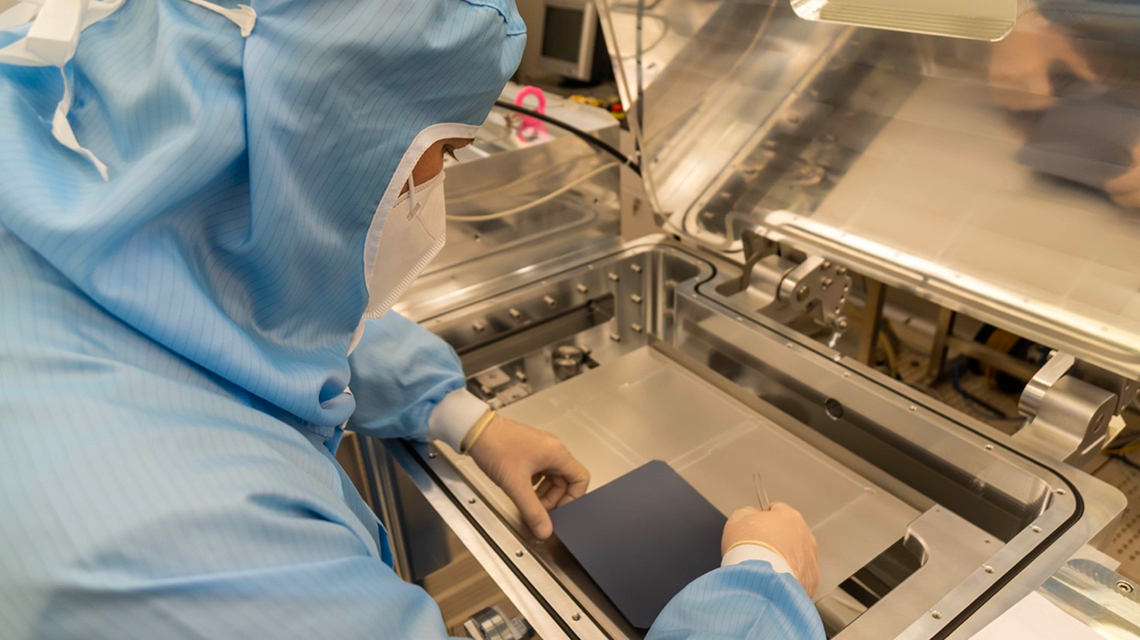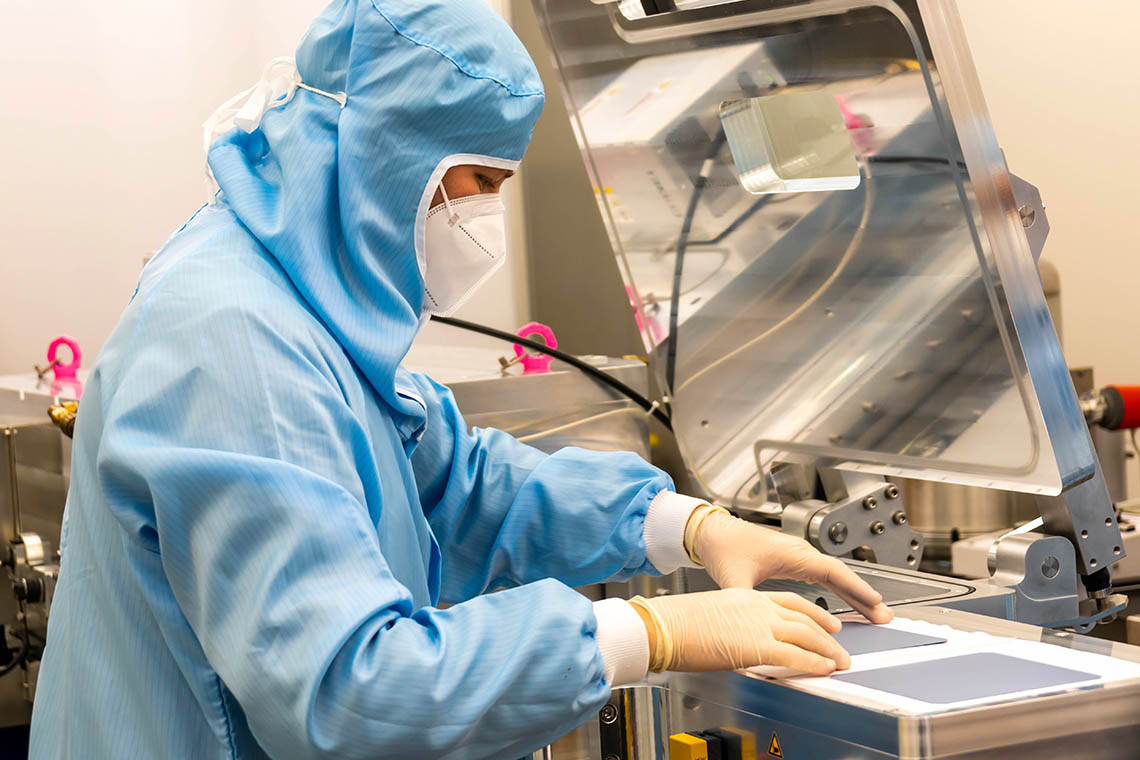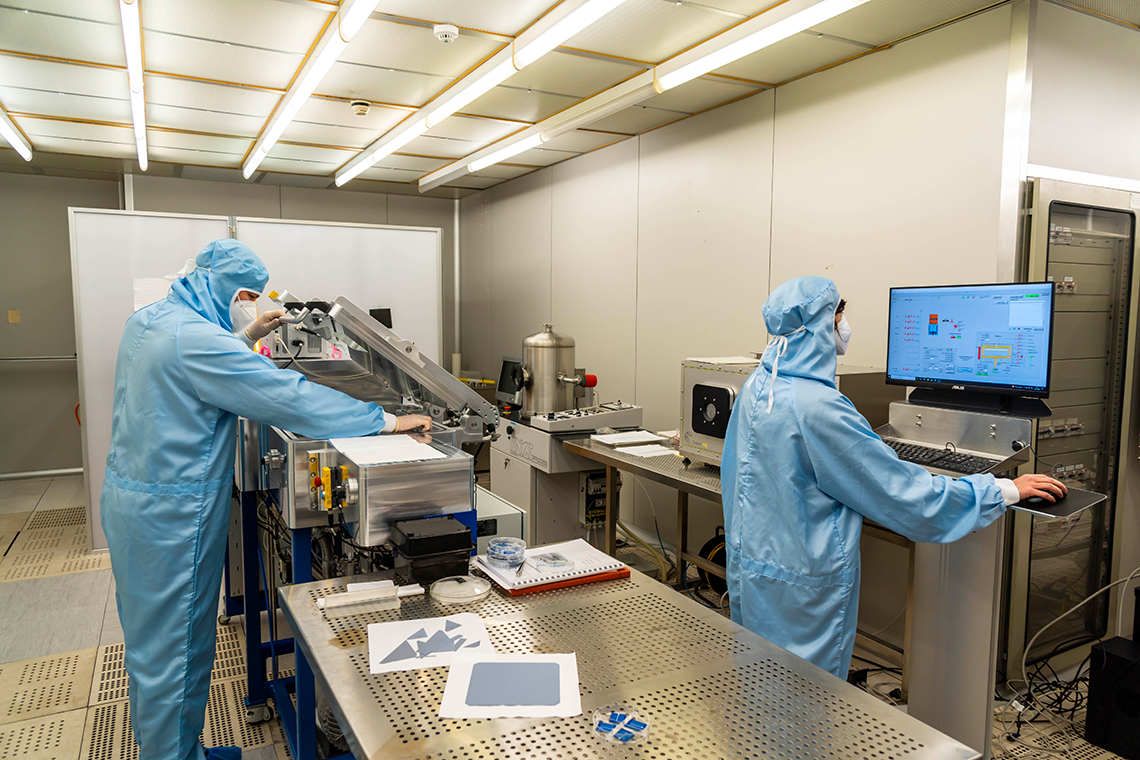Italian National Agency for New Technologies, Energy and Sustainable Economic Development

Energy: Photovoltaic, high-efficiency solar cells for urban and rural applications
Hygh-yeld solar cells with innovative materials for sustainable and efficient photovoltaic modules have been made within the program “Research of an electrical system – High efficiency photovoltaic integrated project”, conducted by ENEA in collaboration with Cnr, Rse and some universities. The cells will have to be integrated in urban environments, landscapes and sites of historical-architectural interest to reduce electricity cost and land use.
In particular, ENEA is working in the Portici (Naples) and Casaccia (Rome) research centers, in collaboration with the University of Rome Tor Vergata, on the development of a new generation of solar cells with the perovskite/silicon "tandem" technology[1], capable of achieving efficiencies greater than 28% in converting solar radiation into electrical energy.
The team is also working on the development of innovative solutions that combine the use of sunlight for photovoltaics and photosynthesis, capable of transmitting the solar radiation necessary for plant growth and generating electricity at the same time. Photovoltaic roofs are being tested to be applied in agricultural greenhouses on a laboratory scale and over large areas: semi-transparent spectrally selective thin-film structures (areas up to 100 cm2) and semi-transparent photovoltaic modules designed by ENEA to be placed in valuable environments.
“Our goal is to improve the performance of solar cells and study applications which favour penetration of photovoltaic technology into the production system and therefore into the electricity system. We are confident that we will soon be able to overcome the "psychological" 30% efficiency barrier for tandem cells, nearing the the global technology level", pointed out Paola Delli Veneri, head of the ENEA Innovative Devices Laboratory.
In addition to improving the performance of current photovoltaic modules and integrating photovoltaics in the urban and rural context, studies focused on the use of materials and device architectures with stable performances over time and with innovative processes to be potentially promising also from a medium/long-term industrial perspective.
The EU climate change package "Fit for 55" provides for Italy to reach 64 GW of installed photovoltaic power in 2030, compared to 25 GW in 2022, generating an annual 88 TWh amount of electricity compared to 27, 5 TWh in 2022.
"Converting the sun's energy into power through photovoltaic technology is one of the most concrete options for the decarbonisation of the energy system, capable of containing the global rise in the average temperature and counteracting climate change", continued Delli Veneri. "But - he said - it is equally crucial to support the Italian industry of the sector, supporting the creation of new production chains and facilitating the path indicated by the national energy plan".
Foto e Video


Plasma enhanced chemical vapor deposition (PECVD) facility used to manufacture silicon heterojunction solar cells, used as the backbone of a perovskite/tandem cell
